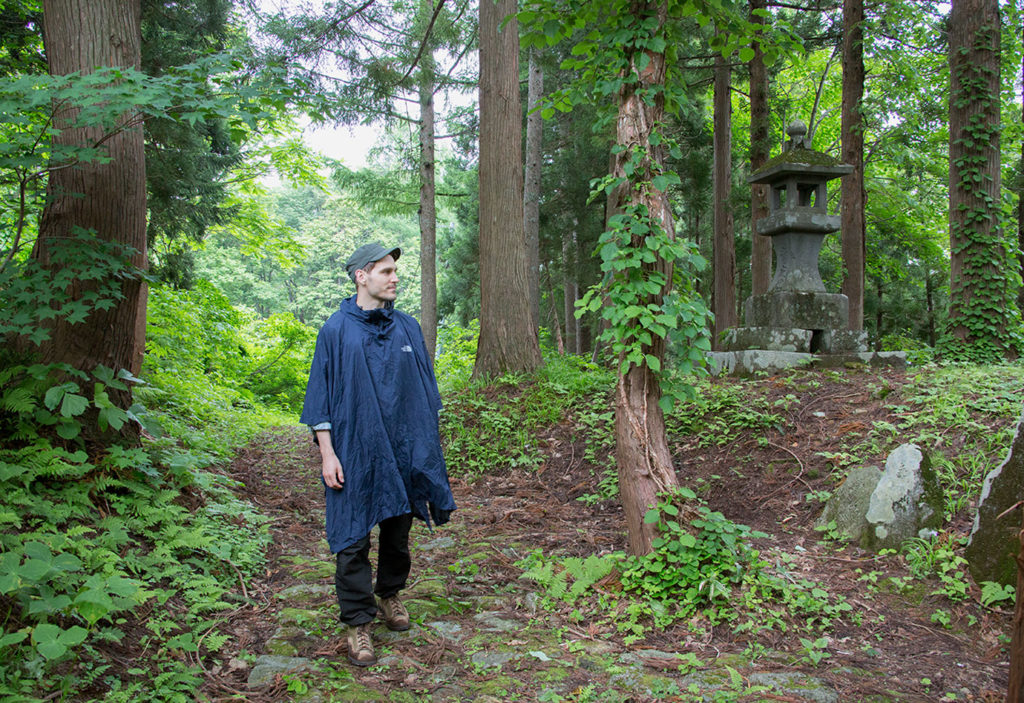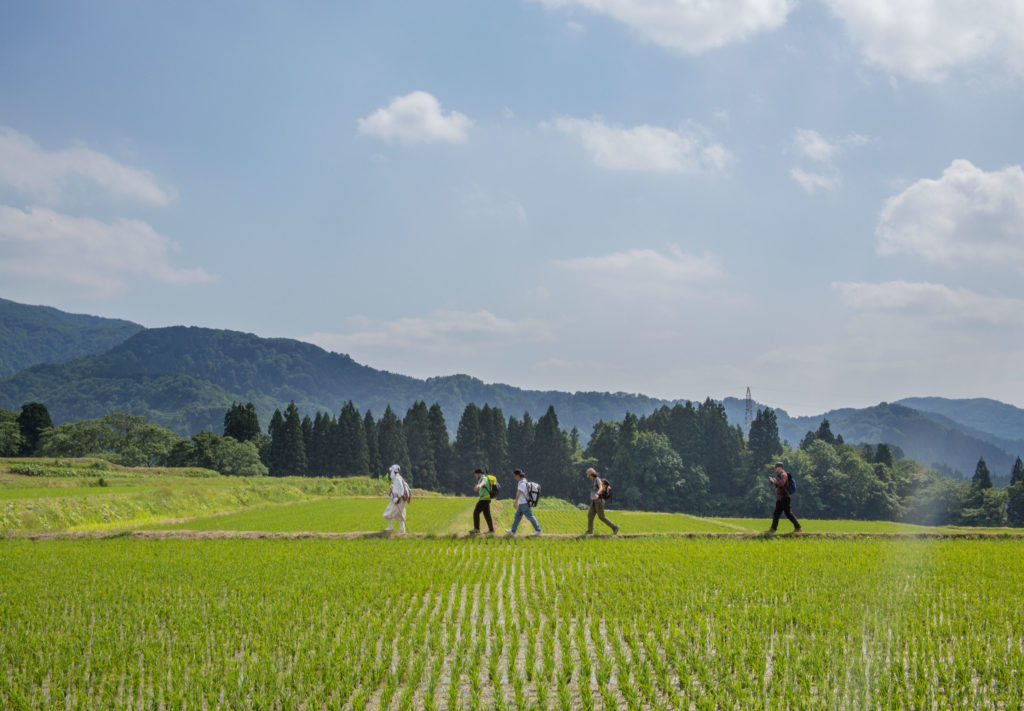Adorned with wild vegetables and the Yudonosan faith
Any conversation about the Rokujyurigoe-Trail starts with Yudonosan. Together with Mt. Haguro and Mt.Gassan, they are collectively known as the three mountains of Dewa. Because they are all located in isolated areas that are not easily accessible, the awe of the harsh natural environment and faith are naturally intertwined, leading to the birth of a uniquely Japanese mountain worship. Yudonosan, which has long been revered as a sacred mountain, is one of the most important sacred places in the three mountains of Dewa, of which people were commanded “neither to speak nor hear of”. In the Edo period, pilgrimages to the three peaks, particularly Yudonosan, became popular among the public. This was because Haguro was regarded as the mountain of the “present” where the blessings of the present life are realized, while Gassan was seen as the mountain of the “past” where the souls of ancestors rest. Yuodonosan, where hot water still gushes out, is a mountain of “future” that represents the birth of life. As such, it was believed that by going through the present, past, and future, one could be “born again while living”. In the mid- to late-March, when this “mountain worship” was at its peak, the number of pilgrims is said to have reached 150,000.
And so to the Rokujurigoe trail. The 100-km mountain route starts from Tsuruoka, passes through Matsune, Juo Pass, Oami, and Tamugimata. It then crosses the Ōguki Pass, and leads to Shizu and Hondoji, and then from Sagae to Yamagata Castle. While it is said to have opened 1200 years ago, the exact date is unknown. As the only highway connecting the Shōnai region and the inland, it provided salt and seafood from Shōnai and daily comestibles such as safflowers, cotton, and beans from the inland. During the Muromachi to Edo periods when mountain pilgrimages were popular, the road was bustling with ascetics clad in white who came from all over the Tōhoku and Kantō regions.
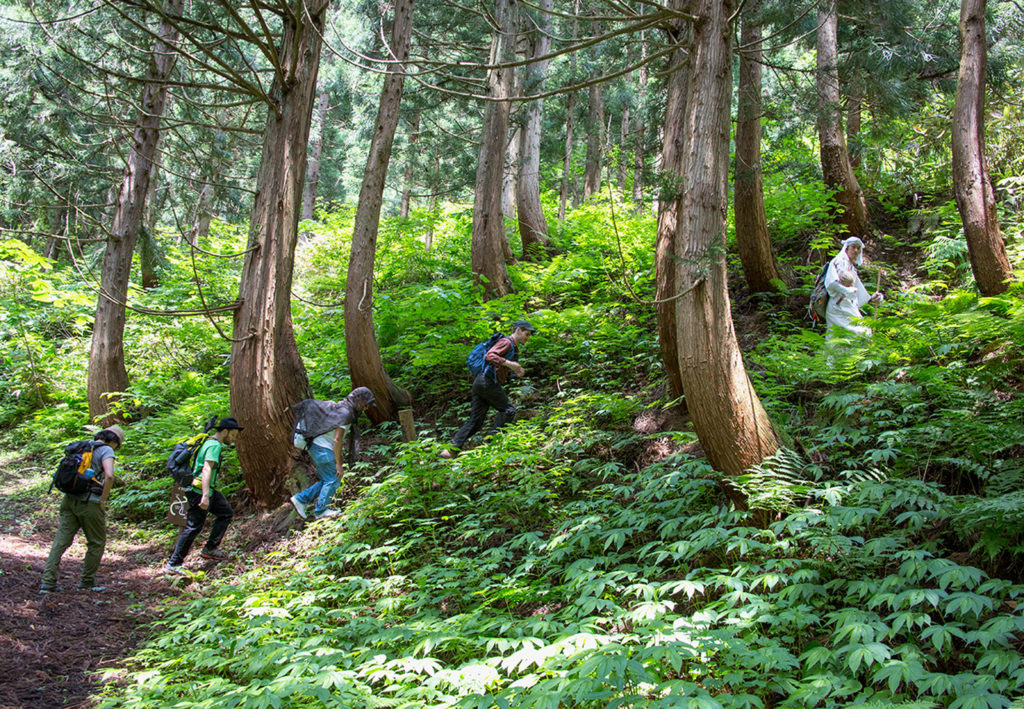
It was late June when the PAPERSKY crew descended upon Tsuruoka. This time, we hiked 30 km from Matsune to the Shizuguchi guardhouse site on the Tsuruoka side of the Rokujurigoe Highway over three days and two nights. Accompanying us is writer Craig Mod who splits his time between Kamakura and New York. While studying Japanese history and culture, he became fascinated by Japan’s ancient roads, where stone monuments and distance marking mounds from hundreds of years ago remain intact and began walking the pilgrimage routes of Shikoku, Kumano Kodo, Nakasendo, and Tōkaido.
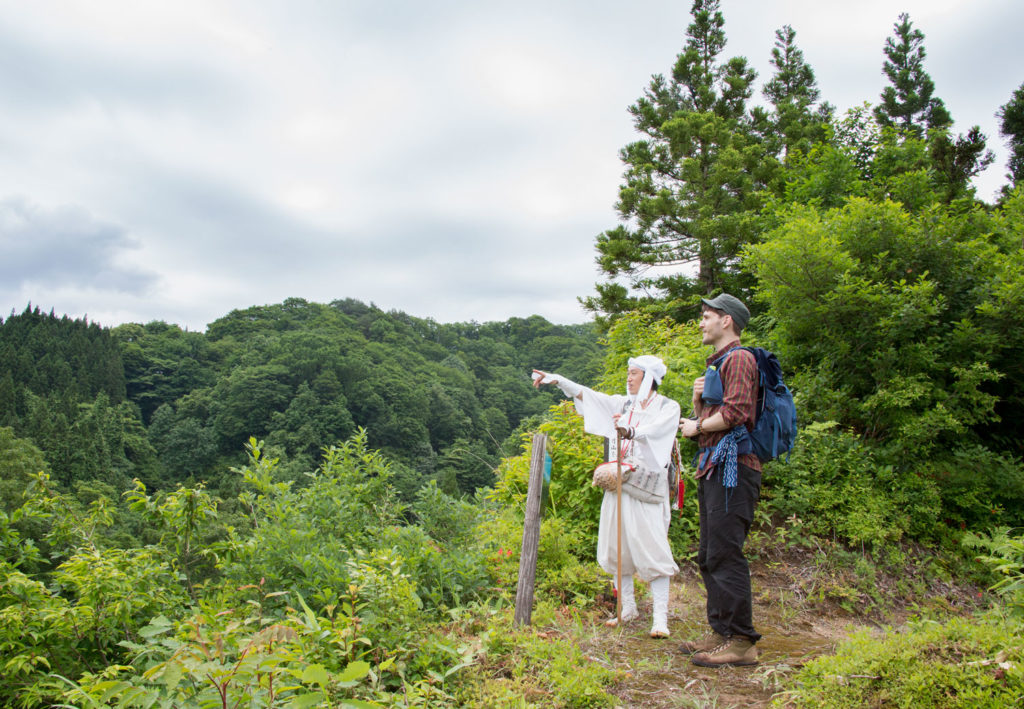
We start at the Hachiman Shrine, the ingress point from the Matsune side. For the first day, we are guided on the 12 km to Tamumigata Haguro mountain by Masanori Naruse. Mr. Naruse, a veteran of the Haguro “Autumn Peak” ascetic practice, is currently based in Tsuruoka. In addition to activities to pass on Yamabushi culture, he also conducts research on local culture, and gathers and distributes wild vegetables and mushrooms from the Gassan range. Dressed in a white robe, head collar, and pewter staff in his hand, Naruse blows a conch shell to get us in the mood for mountain asceticism, and off we go. From a forest road surrounded by rice paddies, the road gradually leads to a verdant mountain road.
Naruse explains that on hiking trails such as this one, the joy of early spring and summer is foraging for wild vegetables. This checks out, as he points out Aka Mizu (Elatostema umbellatum), Ao Mizu (Elatostema laetevirens), and Aiko (Laportea cuspidata.) Each of these delights are key elements of Shōnai’s gastronomic culture.
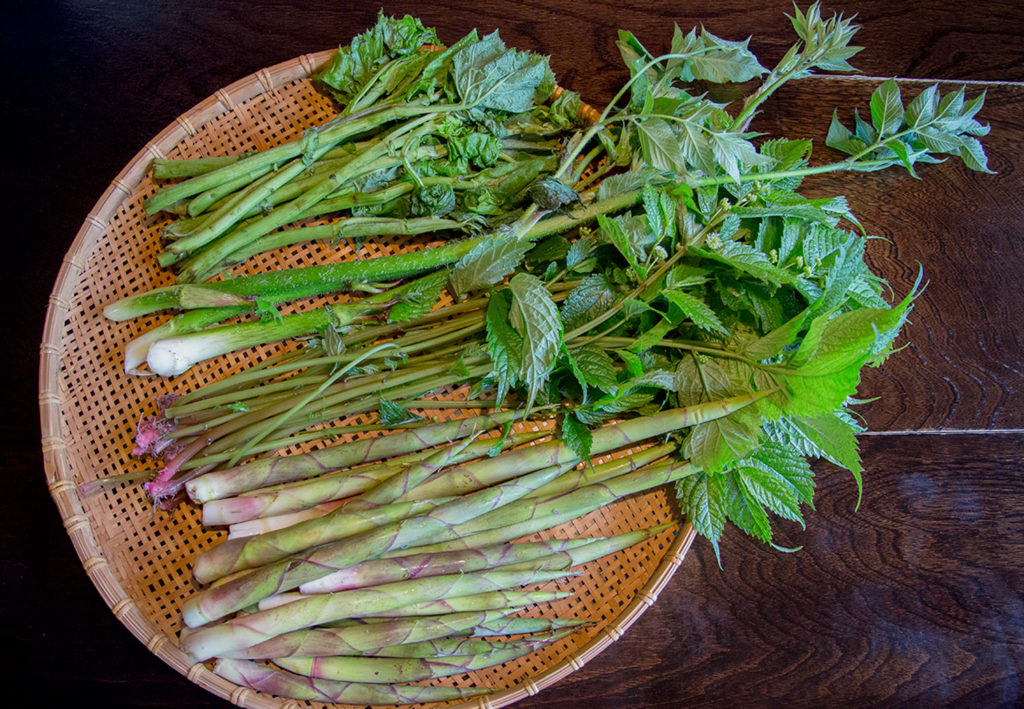
After crossing the Juō Pass (considered the boundary on the Shōnai side) the road finally leads to the sacred area of Yudonosan. Along the way we pass two of the highlights of today’s itinerary: Yudonosan Shigenji Temple and Yudonosan Sohonji Dainichibo Temple, where the Yudonsan faith has been handed down to the present day.
Yudonosan is said to have been founded by Kōbō Daishi (Kūkai). While in China, Kūkai was visited in a dream by Mañjusrii (Monju) Bodhisattva, who informed him that there were three sacred sites in Japan. Upon returning to Japan, Kūkai searched for these on foot. Local lore has it that Kūkai spotted golden Sanskrit characters in present-day Tsuruoka City, traced them, and finally found Yudonosan.
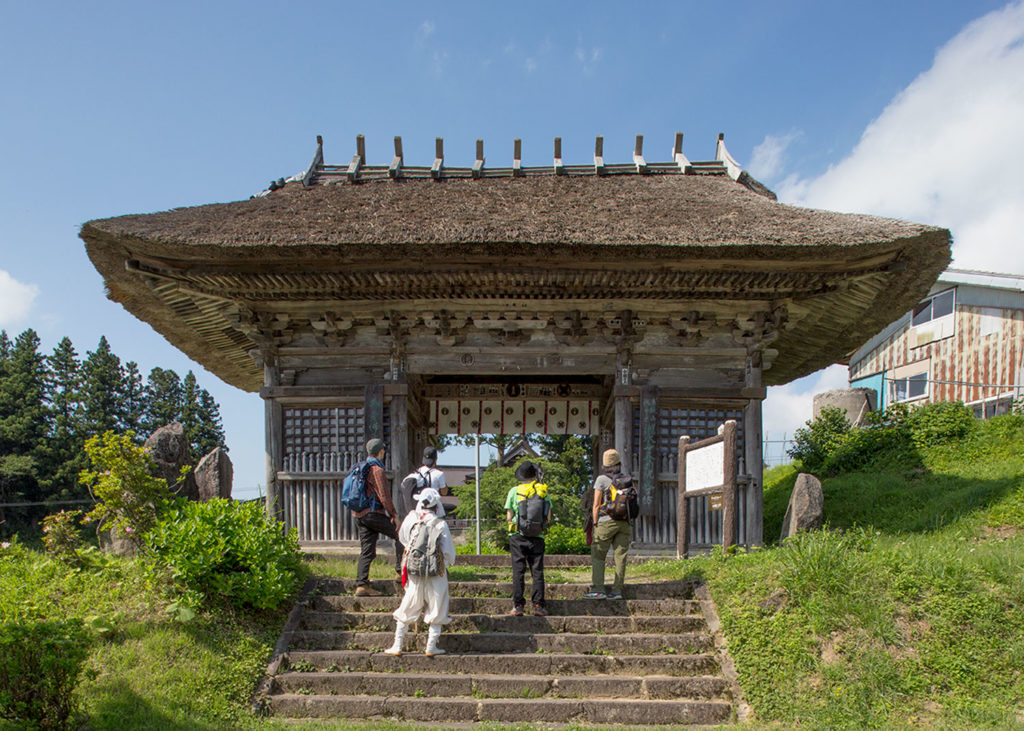
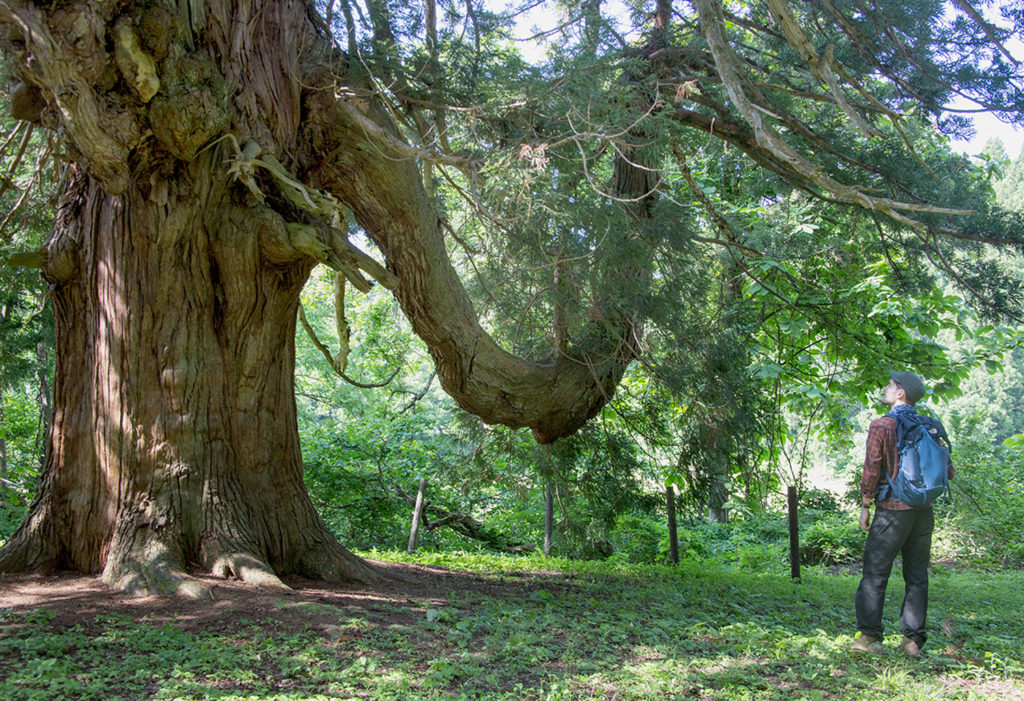
The Shingon sect temple at Yudonosan is closely associated with Kūkai It has a unique belief in Sokushinbutsu(monks who practice austerity to the point of death and mummification) which was born following Kūkai who entered the priesthood at Koyasan. Sokushinbutsu – said to be the “ultimate” form of ascetic practice in the three mountains of Dewa – involves sacrificing one’s own body to save others and becoming a Buddha while still alive through even more rigorous ascetic practice. There are six Sokushinbutsu statues of the Yudonosan lineage remaining in Shōnai, three of which are enshrined at Chūren-ji Temple, Dainichibou Temple, and Fudozan Honmyouji Temple, all located along the thoroughfare.
After leaving the Sokushinbutsu behind and passing through the mountain path, the terraced rice fields of Oami come into view. Crossing the Sainokami Pass, we reach Tamugimata village and our goal for the first day. This area flourished as an inn during the period when the Yudonosan faith was prominent. The thatched-roof houses of this region, called Kabuto-zukuri, are still preserved today.
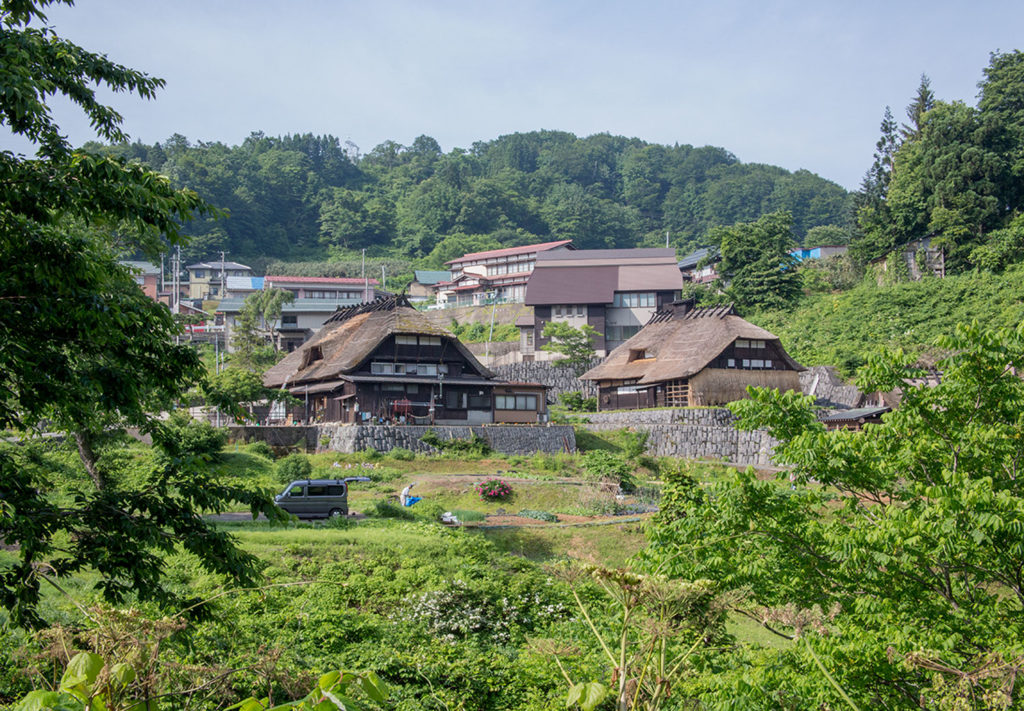
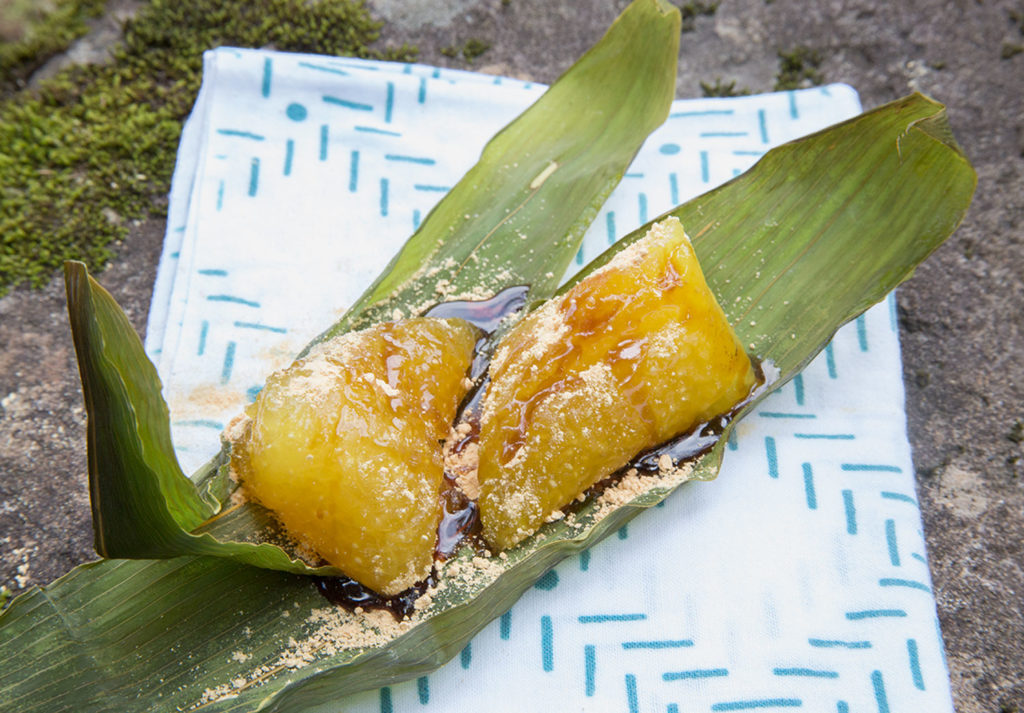
On the second day, our route is some 10 km from Tamugimata to the main shrine via the Yudonosan pilgrim lodge. The high point is the natural beech forest that sprawls across the low mountains. The beech forests remain a rich ecosystem home to many wild beasts ranging from black bears to birds and small soil dwellers. Craig is delighted: “Most religious paths in Japan are planted cedar forests, so it is refreshing to be able to stroll through a mature beech forest.The twittering of the birds and the flowers and grasses underfoot give you a sense of the diversity and vitality that only a natural forest can offer.”
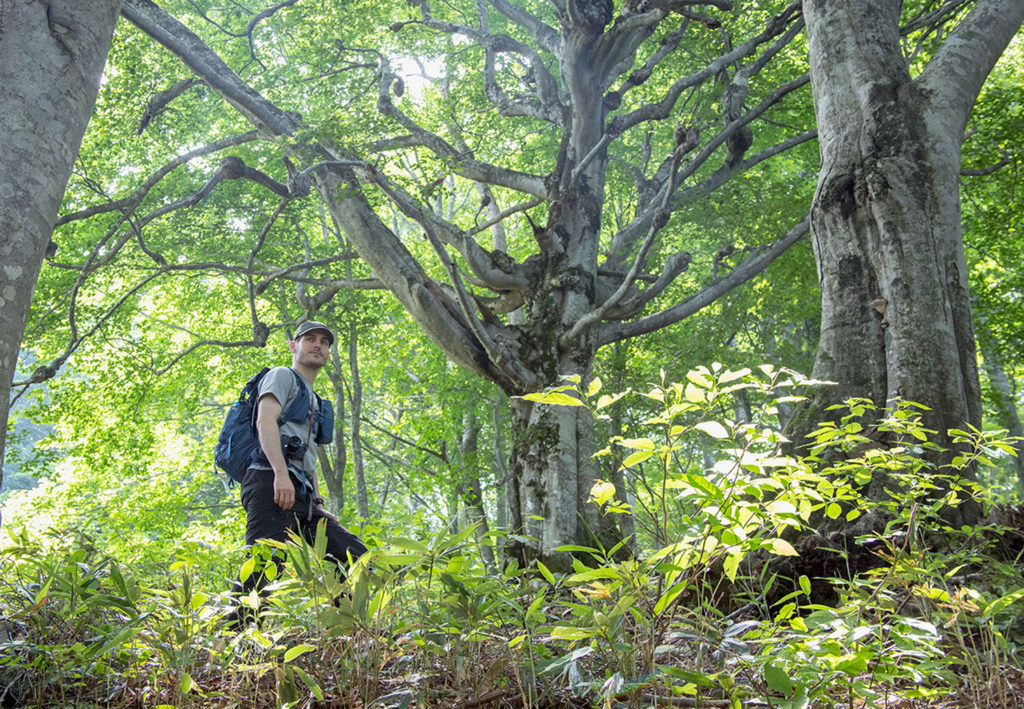
We pass the 400-year-old beech tree and symbol of the highway, followed by Hananokizaka, a beech forest famous for its autumn leaves. t The route then takes us through a marshy area with mizubasho (skunk-cabbage), and continues along the old Tofu Road to the Yudonosan pilgrims lodge. After hat, we finally reached the inner sanctum of Yudonosan.
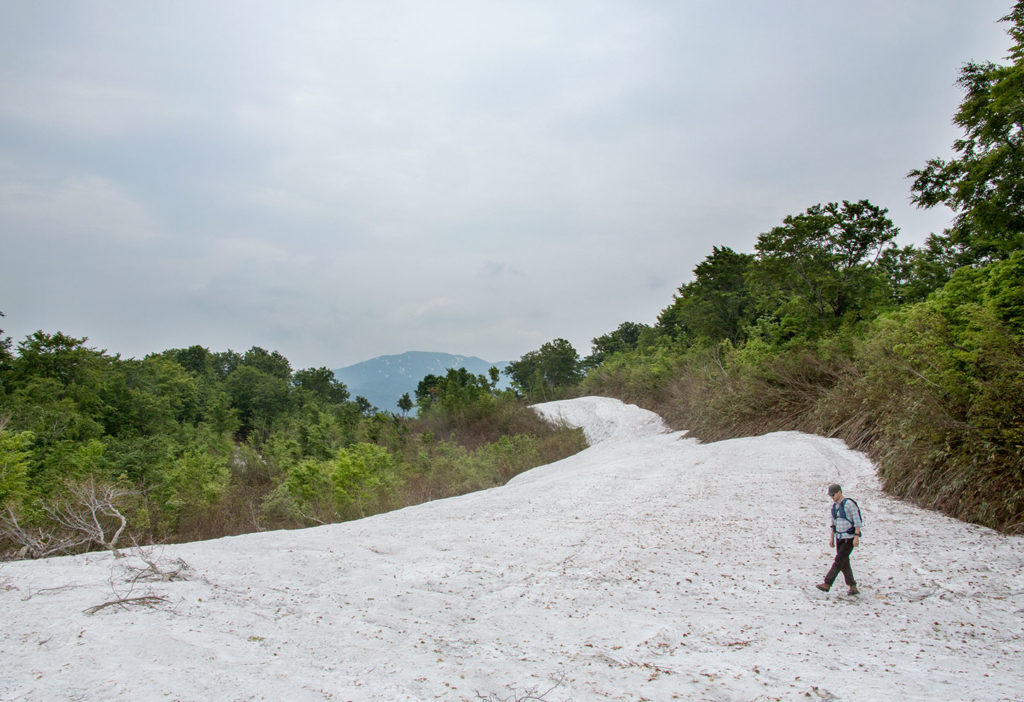
There is no main shrine building here. Enshrined is a huge reddish-brown rock from which boiling water gushes. Pilgrims disrobe from their kimonos and undergo purification, coming into direct contact with the sacred body. Said to embody Japanese Animist beliefs, people today and in the past have found the source of nature and its life force in the hot water that gushes forth from the spring. According to the senior priest: “In the Edo period there were many mountain pilgrimage groups in the Kantō and Tōhoku regions, where worshippers draped in white walked along the Rokujyurigoe-Trail to pay their respects and pray for rebirth. Back then, life, faith, and culture were inseparable. All roads conveyed not only the exchange of goods, but also thoughts, wishes, and prayers to the divine spirit.”
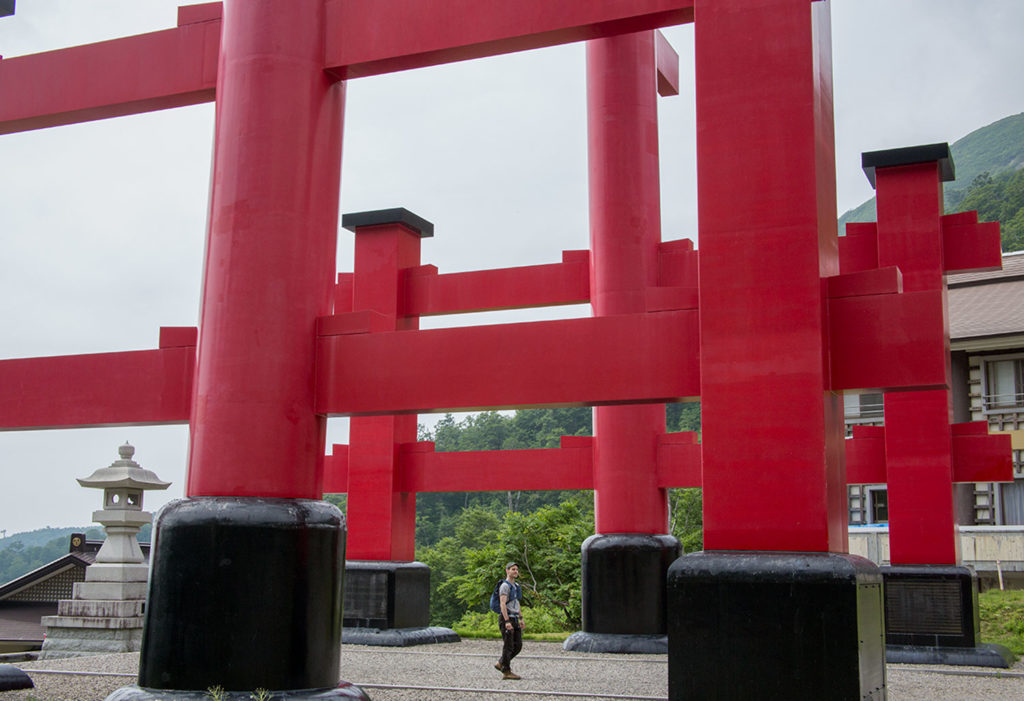
On the third day, Yasuhiko Shida of the Rokujurigoe Highway Preservation Committee guides us on a walk from Yudonosan to Shizu Onsen. Shida runs a long-established ryokan in Shizu, which was opened 400 years ago when the Kuchidome guardhouse was built. He wants to restore the old townscape that once flourished as an inn town, and is focusing on the Rokujurigoe Highway which fell into disuse after World War II. Together with volunteers, he has been carving out buried paths and maintaining them, while also serving as a guide. According to Shida, the highlight of this section of the road is the crossing over the Ōguki Pass, the highest point on the highway. We doggedly scale the snow-covered single-track, crossing a series of small streams. Some of the wooden guideposts set up by Shida and his team had been snapped off by post-hibernation bears. Indeed, this ancient trail is shared by bears, deer, and hikers alike.
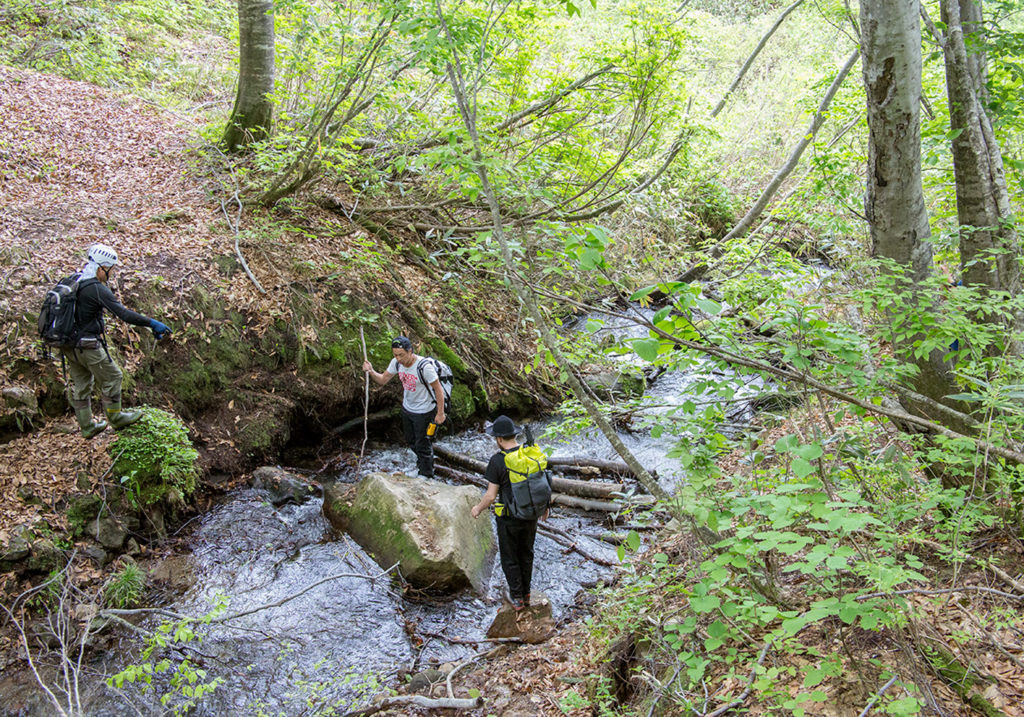
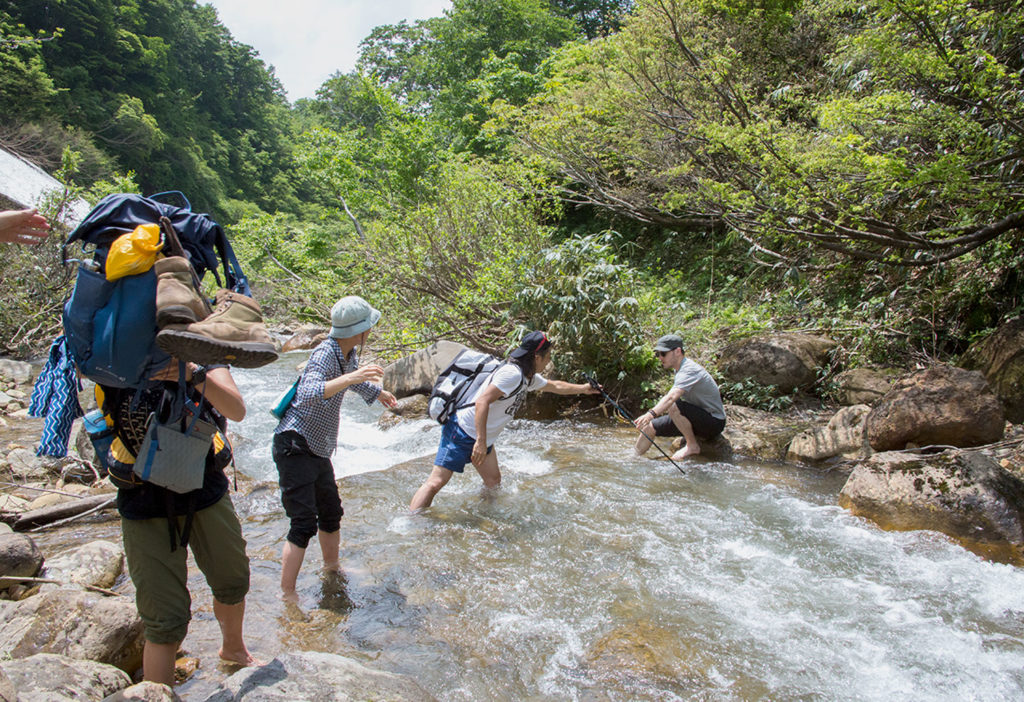
At the goal of the three-day, 30-km hike, we are greeted by a stone lantern and lichen-covered cobblestone pavement at the site of the Shizuguchi guardpost. Looking up at Yudonosan from the road, one can’t help but feel overwhelmed by the natural beauty of the area. The awe for this sacred mountain site has been passed down from ascetic to hiker over the past 1,200 years.
